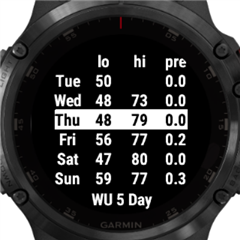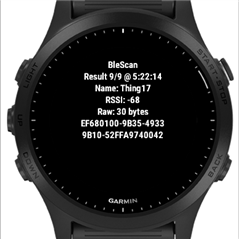Hello,
I'm currently working on an app using menus and checkboxes. The checkbox label and contents are to be stored in the settings, so the user enters what they need in the settings menu. I am experiencing a few issues, the solutions which I could not find in the Programmer's Guide or in the forums and hoping to get some advice here.
1. I set a default value for each menu title as a string, but I can't seem to get it to show up in the settings menu; it shows up blank on the device and the settings menu until the user types their custom title in. Ideally it should display "List 1" as default until the user does their own thing, based on this code below. What am I missing?
<property id="ListName01" type="string">List 1</property>
<setting propertyKey="@Properties.ListName01" title="@Strings.ListName01Title">
<settingConfig type="alphaNumeric"/>
</setting>
2. After the user adds their settings, the display does not automatically update unless they go back to the home screen then to the menu list again. I've added the onSettingsChanged function in the app.mc file with a message log enclosed. I see the message in the log whenever the settings are changed, but the menu list or checkbox won't change dynamically while looking at them.
function onSettingsChanged() {
WatchUi.requestUpdate();
System.println("Settings changed!");
}
3. Is it possible to change the colours of the menu list and checkbox from black on white?
Thanks in advance.




